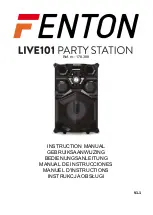
• Vaginal exteriorization of the mesh.
PRECAUTIONS
Steema must be used only by surgeons who are trained in the implantation
technique and the postoperative management.
The sling must be handled with care, avoiding the use of pointed, serrated or
sharp objects. Any damage, perforation or scratch may lead to complications.
Fluff, fingerprints, powder, bacteria or other items contaminating the sling
surface may cause infections or reactions to foreign bodies. Extra precautions
must be taken to avoid contamination.
The surgical approach must be made carefully, avoiding major blood vessels
and organs. Risks are minimized by paying attention to the local anatomy and
passing the needle correctly.
The use of polypropylene in urogynecological procedures has been associated
with cases of erosion, the treatment of which may require the partial surgical
removal of the implant.
Like with all surgical procedures, there are certain known risk factors that may
affect the results on the patient’s pelvic floor and which may include, but are
not limited to, altered vascularization (e.g. smoking status, estrogen status,
previous radiation of the pelvic floor, etc.), or active infections in or near the
surgical site. The patho-physiological conditions previously described must
be considered at the time of determining whether the patient is a suitable
candidate for sling implantation.
Hemorrhages may occur. The patient must be carefully monitored before
leaving the hospital.
The operating room conditions must comply with the local hospital/
administrative/government procedures and regulations.
After use, product and packaging must be disposed of pursuant to the local
hospital/administrative/government procedures and regulations.
SUPPLY AND STORAGE
Steema is supplied sterile and pyrogen-free, in a pouch and/or blister.
Any damage to the sterile barriers renders the product non-sterile.
Storage must comply with the following conditions:
• TEMPERATURE: Room temperature.
DO NOT USE AFTER THE EXPIRATION DATE INDICATED IN PACKAGING.
MAGNETIC RESONANCE (MR) ENVIRONMENT
The Steema sling does not affect and is not affected by magnetic resonance
(MR) environments.
POSSIBLE COMPLICATIONS
The possible complications associated with the use of the sling should be
discussed with the patient prior to the surgery.
The use of this sling may result in complications related to the surgical
procedure.
There may also exist complications associated with the patient’s reaction or
degree of intolerance to any foreign material implanted in her body.
Infections not responding to antibiotic treatment require the partial or total
removal of the implant.
Some complications may require removal of the sling. Such procedure may
involve multiple surgeries. In some cases, total removal of the sling may not be
possible. Performance of multiple surgeries does not ensure the total repair of
complications.
Some patients may experience groin or vaginal pain during the
initial postoperative period. Treatment with ANALGESICS and ANTI-
INFLAMMATORIES may be enough to relieve the pain.
Other complications reported with slings include, but are not limited to:
• Infection.
• Erosion of the urethral mucosa, vaginal mucosa, wall of bladder or other
surrounding tissues.
• Pain or persistent pain (pelvic, vaginal, in the groin or thighs).
• Vaginal pain, discomfort or irritation.
• Dyspareunia.
• Purulent, serous or bloody discharge.
• Inflammation.
• Injury of blood vessels or nerves.
• Organ perforation or laceration.
• Bladder instability.
• Urinary obstruction.
• Urinary issues.
• Mesh exposure.
• Recurrence of incontinence.
• Hemorrhage.
• Neuromuscular issues.
• Vaginal healing.
Postoperative formation of a fibrous tissue capsule around the sling is a normal
physiological response to the implantation of a foreign body.





































